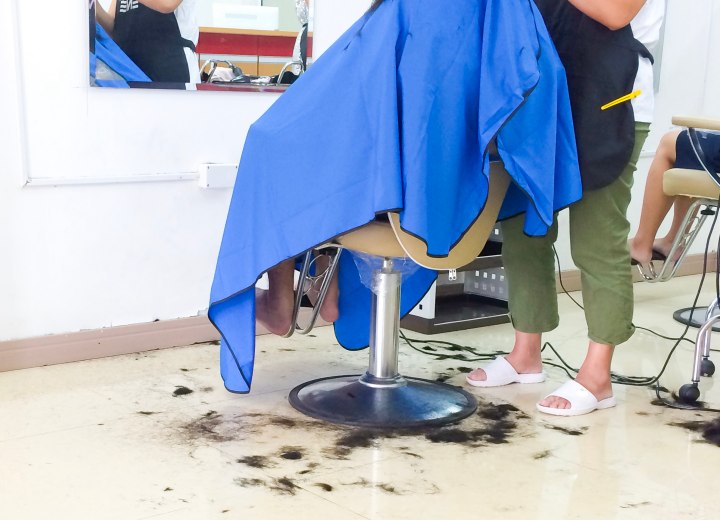Hair on the Floor

I know about ponytail donations to make wigs, but is there anything that the short hairs can be used for?
A: Most salons just throw away cut off hairs that end up on the floor.
• Hair must be at least 7 inches long.
• Hair must be clean and in a good condition.
• Hair must be fastened into a ponytail that is secured at both ends when it is cut and put into a plastic bag before it is sent to the wig manufacturer. Thus, it is advisable that the hair is braided before it is cut.
You’ll note that the guidelines are very strict and straight forward. This is to increase efficiency and time control to create the wigs once the hair has reached the manufacturer. People are usually under the impression that all cancer patients receive wigs made from these donations. This isn’t true.
Most cancer patients receive a wig made of synthetic or acrylic hair. This is because synthetic wigs are much more cost effective to produce than human hair wigs. There are charities that collect human hair to manufacture wigs for cancer patients, but this is not the norm.
Also, you’ll note that most hairs that are cut in a salon do not conform to the length stipulation of wig manufacturers. Most people go to the salon to have their ends cut or have less than 7 inches taken off. This means that the vast majority of hair cut in a salon cannot be used in wigs, and there is no other viable commercial use for hair.
People have tried some pretty strange things with hair though:
Hairdresser Phillip McCrory got the brilliant idea to use hair to soak up oceanic water with oil spills. He tested his theory by stuffing some human hair into a pair of hosiery of his wife, and then binding the ankles of the pantyhose together to create a ring formed structure. He then filled his son’s small splash pool with water and added oil to it. He immersed the filled pantyhose onto the mix and watched the hair seep up all of the oil. He approached NASA with his idea and managed to grab the authorities’ attention with his original concept.
Tests were done, and it was established that hair doesn’t absorb the oil, but rather attracts it. This means that the oil attaches itself in layers around the structure of the hair. McCrory predicted that 25,000 pounds of hair in nylon bags could be enough to adsorb 170, 000 gallons of spilled oil. Tests that were done using this method and it showed that a gallon of oil can be adsorbed by the hair in less than two minutes. These days, mats of human hair are made by eco-friendly volunteers; based on Phillip McCrory’s concept. The hair mats are put into the oil spilled water and used to soak up the oil. It is not known why NASA didn’t implement this idea themselves on a larger scale, though
©Hairfinder.com
See also:
Hair extensions
Wigs and hairpieces
The value of hair